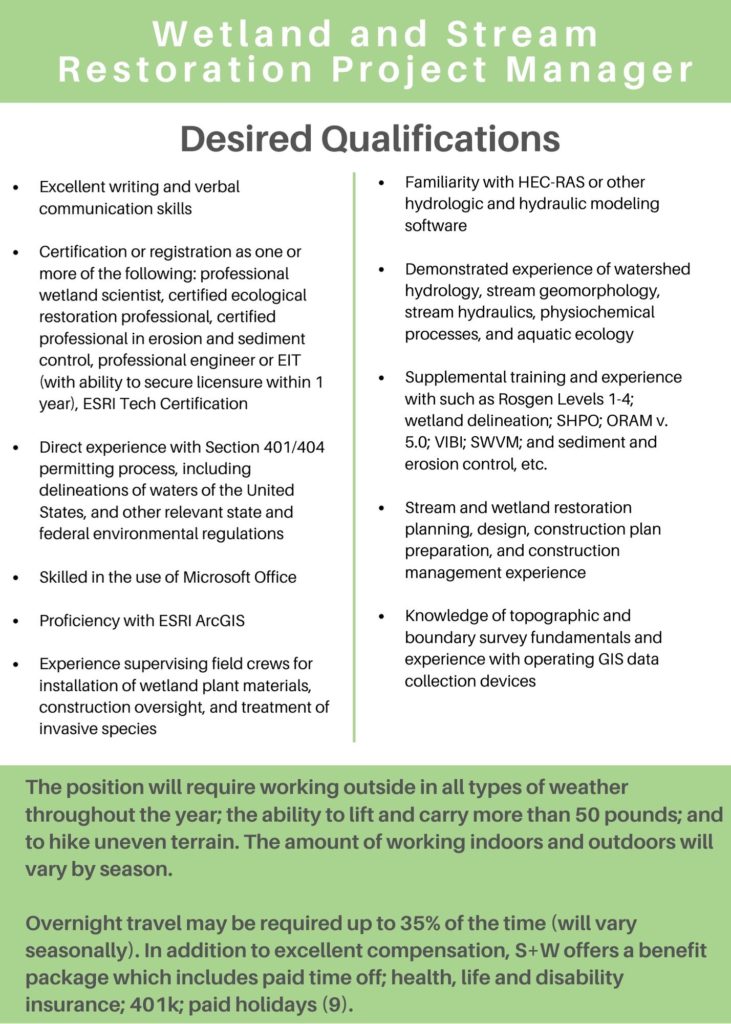The Stream + Wetlands Foundation (S+W) was retained by Ultium Cells LLC, a joint venture of General Motors (GM) and LG Chem, to provide more than 130-acres of wetland mitigation for the new battery cell manufacturing plant to be constructed in Lordstown, Ohio. Ultium Cells LLC is investing $2.3 billion in the new facility. The location chosen for the new plant is significant because it will be built next to the former GM Lordstown Assembly Plant, which closed in 2019. The former GM Lordstown facility is being repurposed by Lordstown Motors, which will begin manufacturing electric pickup trucks in 2021. The 158-acre Ultium Cells site, located along Tod Avenue between Salt Springs Road and Hallock Young Road, will house the battery cell plant, several support buildings, parking lot and stormwater management features. The facility is estimated to create more than 1,100 new jobs, a huge win for the local community.
Construction of the new plant will impact 66 acres of low to moderate quality wetlands. This prompted GM and their ecological consultant Arcadis, in late November 2019 to enlist the help of S+W to locate and plan for a suitable wetland mitigation site that could meet the compensatory mitigation needs of the new plant. ”The challenges presented by GM were steep as they not only needed a very large wetland mitigation site that had to be located in the same watershed as the new plant, but they also had an aggressive schedule to meet to get the plant on-line,” explained S+W President Vince Messerly. The aggressive schedule included the need to submit their Clean Water Act Sections 401 and 404 permit applications by early January 2020 and secure those permits by early April 2020.
In addition to S+W, the team working to secure the 401/404 permits included Jim Hartnett of GM (project lead),Vinnie Tremante of Arcadis, as well as management and support staff from the Ohio Division of Wildlife, U.S. Army Corps of Engineers Pittsburgh District, the Ohio EPA, United States Fish and Wildlife Service, the Natural Resources Conservation Service and the United States EPA.
“We selected Stream + Wetlands Foundation as our partner because of their knowledge of the region and their extensive experience with wetland mitigation,” said Vinnie Tremante, Arcadis project manager. “They moved quickly and adeptly, doing quality work in a timely manner to help the team complete the permitting on schedule. They managed requests from multiple state and federal agencies to arrive at a final mitigation plan that will provide significant long-term environmental benefits to the Mahoning watershed.”
Working under a tight timeline and strict siting requirements, our team went to work diligently seeking viable mitigation sites within the Mahoning River watershed. We met with numerous private landowners, park districts and conservation organizations in the area to seek a suitable site or sites that could provide the 130-acres of wetland mitigation. Numerous possible locations were identified, and the short list of sites was presented to management at GM and Ultium Cells for their review and input. Out of this process, a site owned by the Ohio Department of Natural Resources (ODNR) was selected. This site was chosen for a number of reasons including: location, the predominance of hydric soils, natural hydrology, the ability for the public to use the site, the ability to restore habitat for sensitive flora and fauna in the area and habitat connectivity..
The 172-acre mitigation site, located north of Mahan Denman Road in Mecca Township in Trumbull County within the Mosquito Creek Wildlife Refuge, is managed by the Ohio Division of Wildlife. The wetland mitigation project will restore a wide variety habitat across the entire site including wet meadow, forest, scrub shrub, shallow emergent marsh and deep emergent marsh habitats. The established wetlands and uplands on the site will help to improved water quality, habitat diversity and ecological connectivity for sensitive birds, amphibians, and other wildlife species in and near the Mosquito Creek Wildlife Area.
“Stream and Wetlands Foundation did a remarkable job guiding us through the wetland mitigation process,” commented Jim Hartnett, Manager, Eco-Restorers/Remediation Team with General Motors. “Their in-depth knowledge and strong relationships with the regulatory community was a big factor in meeting the project timelines and developing a project that will enhance the environment and biodiversity of the Mosquito Creek watershed. Ultium Cells looks forward to a successful project construction and establishment of a wetland that will be preserved in perpetuity for many generations to come. Many thanks to Stream and Wetlands and all the government partners who worked so diligently to make this project to protect the environment possible.”
Construction activities for the wetland mitigation project began in early May with earth moving completed once field conditions are appropriate. The battery cell plant is projected to be complete by spring 2022 and fully operational by 2023. S+W is proud to partner with GM and Ultium Cells on this innovative project, as well as have the opportunity to restore and permanently protect the 172-acre mitigation.

